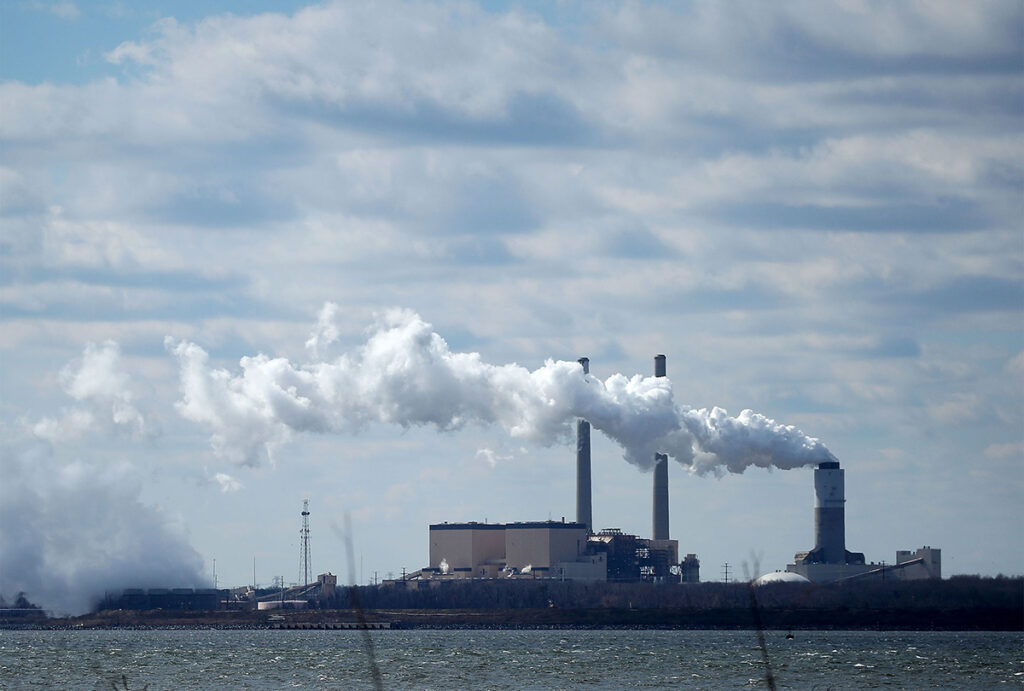
LITTLETON, Colorado, Sept 4 (Reuters) – U.S. power developers are planning to sharply boost natural gas and hydropower generation capacity and are cutting back on plans to add new solar and wind farms, according to recent data on the U.S. power capacity pipeline.
As of mid-2025, U.S. power developers had just over 114,000 megawatts (MW) of natural gas capacity under construction or in so-called pre-construction, according to data from Global Energy Monitor (GEM).
That capacity total is more than twice as large as what was in developer pipelines a year ago. Gas plants are the single largest power source among all planned capacity additions at the construction and pre-construction stages, GEM data shows.
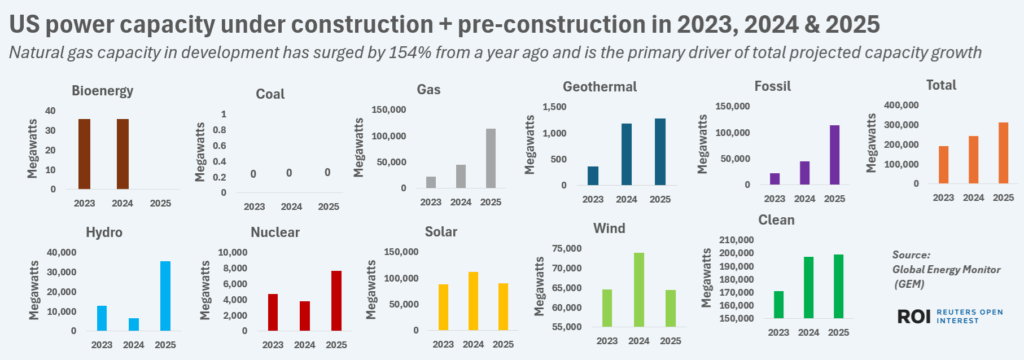
US power capacity under construction + pre-construction in 2023, 2024 & 2025
Developers have also sharply lifted planned hydropower and nuclear generation capacity from a year ago, and have made cuts to both solar and wind capacity plans compared to mid-2024.
The large changes within the planned power capacity mix highlight the impact of the sudden swing in federal government energy policies following the reelection of U.S. President Donald Trump.

US power capacity development pipeline by stage and fuel in mid-2025
The gas-heavy development schedule also underscores how utilities are prioritizing dispatchable power sources over intermittent renewable energy as they scramble to ensure that electricity supplies keep up with rapidly rising demand.
FIRED UP
Natural gas plants make up around 46% of currently operational U.S. power capacity, and 36% of capacity at the construction and pre-construction phases.
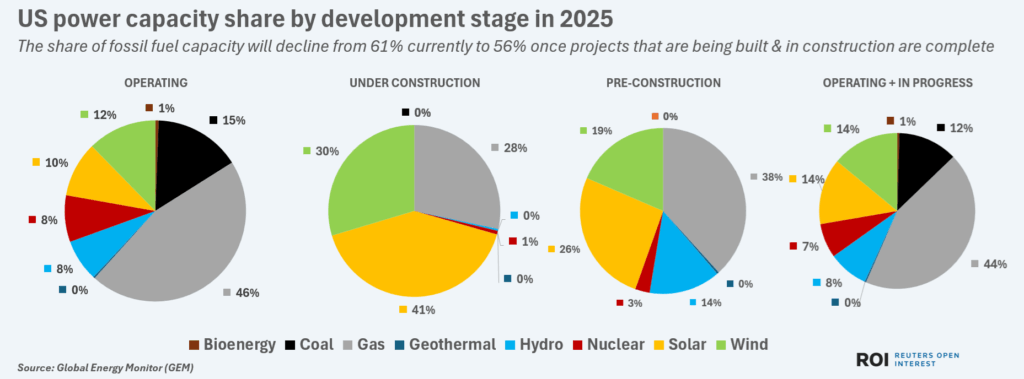
US power capacity share by development stage in 2025
Around 16,300 MW of gas capacity is currently under construction, while around 98,000 MW is in pre-construction, which is where sites have been identified and relevant permits have been applied for.
On top of the roughly 114,000 MW of natural gas power capacity, U.S. utilities are building or planning to build around 36,000 MW of new hydropower capacity and nearly 8,000 MW of new nuclear capacity.
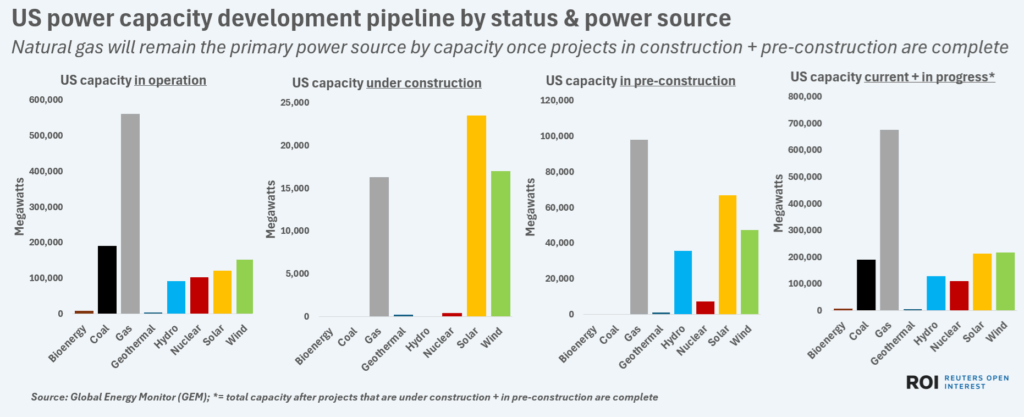
US power capacity development pipeline by status & power source
Those diverse power sources have an important common attribute – they are all able to be dispatched on command by utilities in order to balance system power needs.
The total volume of dispatchable power capacity currently in the developer pipeline is around 159,000 MW, and compares to around 57,000 MW at the same stage a year ago.
CLEAN CUTS
The sharply rising capacity footprint for dispatchable power contrasts with the capacity pipeline for renewable energy, which is also known as intermittent power because it is only produced when the sun is shining and the wind blows.
Total solar capacity currently under construction or in pre-construction is around 92,000 MW, down from around 112,000 MW at the same developmental stages in 2024.
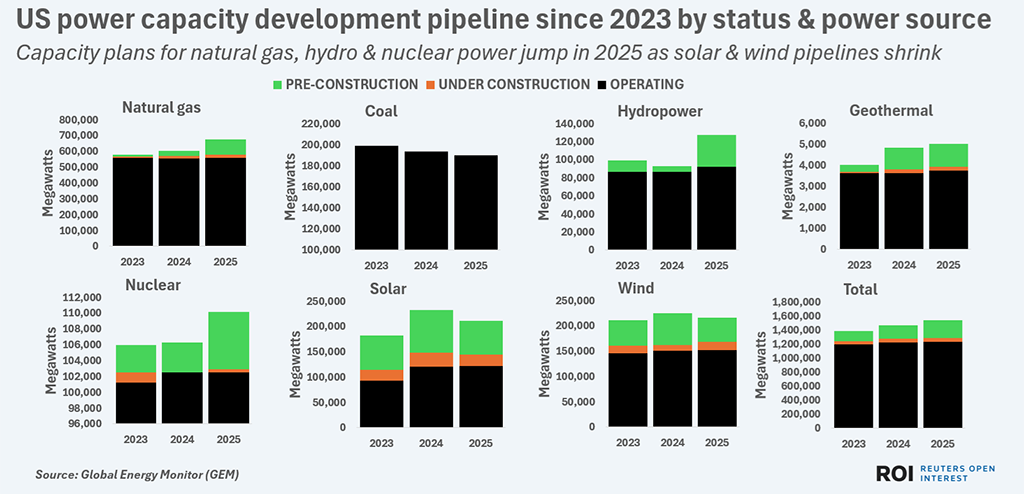
US power capacity development pipeline since 2023 by status & power source
Current wind power capacity in development is around 65,000 MW, down from around 74,000 MW a year ago.
All told, around 155,000 MW of renewable energy capacity is currently being built, down from around 186,000 MW a year ago.
Some of the apparent cuts to the renewables development pipeline can be explained by the fact that some of the capacity that was previously being built is now operational.
Solar power capacity is quick to build, and the total solar capacity in operation rose from 120,460 MW in 2024 to around 121,311 MW currently, GEM data shows.
Operating U.S. wind capacity increased from 150,592 MW in 2024 to 151,429 MW as of mid-2025.
Other reasons for the cuts to the renewable pipeline include the growing wait times for new power assets to get connected to local grids, and the rising costs for parts and materials – especially for wind farms.
Steep cuts to future tax breaks and subsidies under the Trump administration have also led to cuts to some renewable power capacity plans, especially in states with already long interconnection wait times.
RE-CHARGING
Utilities are also rapidly building out new battery storage capacity so that surplus power from renewable assets can be stored and then discharged during peak demand periods.
Around 8,000 MW of battery capacity is currently planned to be added to the U.S. utility network by the end of the year, according to data from energy data portal Cleanview.
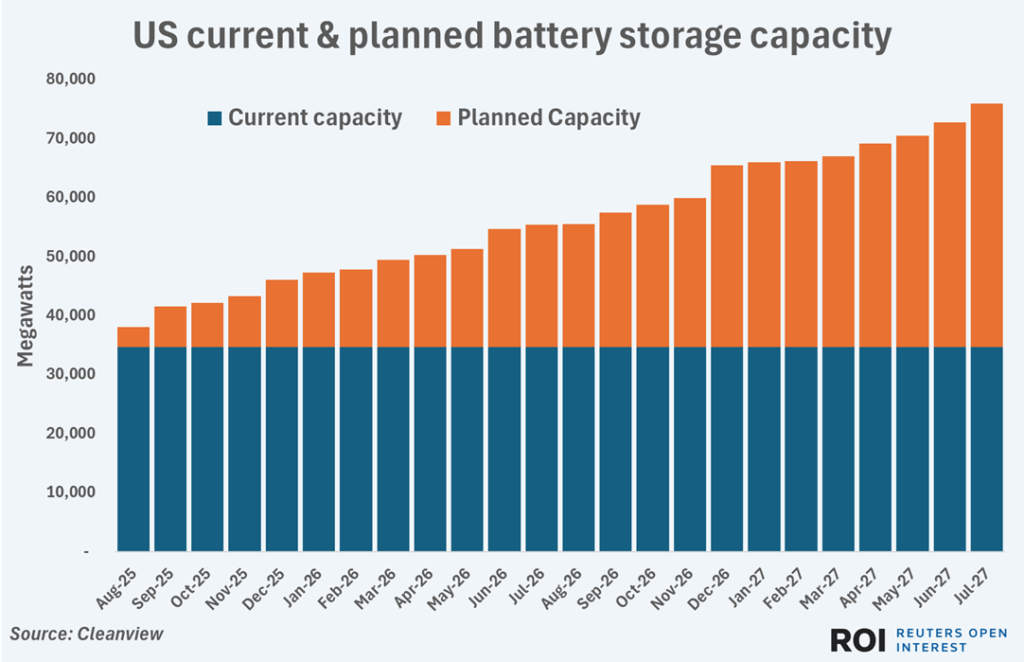
US current & planned battery storage capacity
When brought online, that new battery capacity would bring total U.S. utility-scale battery capacity to around 46,000 MW by the end of the year.
That expanded battery capacity will allow utilities to make better use of the renewable power capacity already in place, and ensure that solar generation that exceeds system demand needs during the sunniest periods can be stored for later use.
That in turn will ensure that the overall power mix within the U.S. generation system will continue to get cleaner over time, even if the pace of new solar and wind capacity growth continues to slow compared to previous years.
That said, the ramped-up gas development pipeline will ensure that natural gas remains the central pillar of the U.S. generation system once current construction and pre-construction of all power types is complete.
STAYING GAS-HEAVY
Gas capacity’s share of the overall U.S. power system will remain more than twice as large as any other power source, at 44%, once construction and pre-construction work is complete.
However, coal capacity will be overtaken by both wind and solar once the current construction binge is finished.
Coal has a roughly 15% share of total currently operating capacity, while wind has a 12% share and solar has a 10% share.
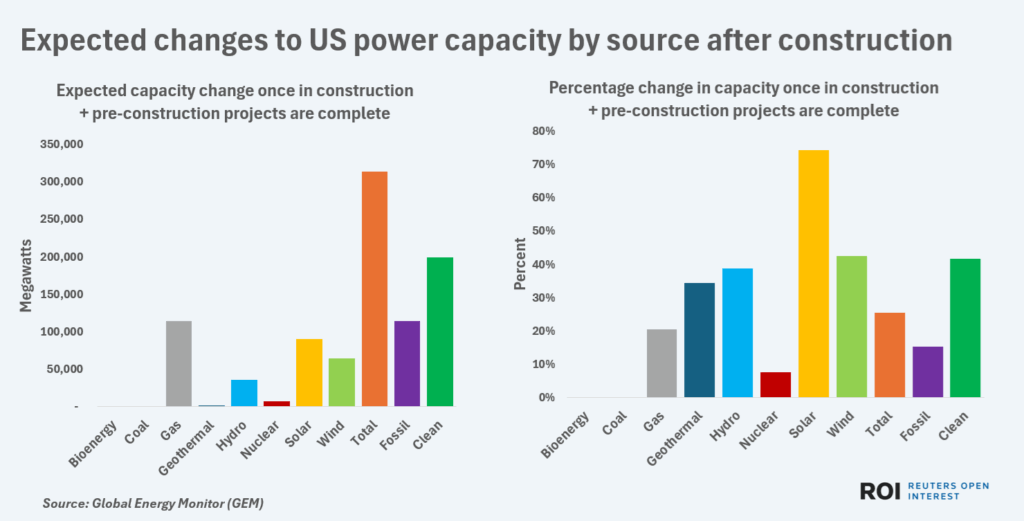
Expected changes to US power capacity by source after construction
Once projects that are currently under construction and in pre-construction are complete, both wind and solar will have a roughly 14% share while coal power’s share will drop to around 12%.
That greater footprint from renewables will mean that clean power sources will boost their overall share of the capacity mix from 39% currently to 44% after building work is complete.
That in turn means that while the U.S. power system will remain primarily gas-fed, clean power sources will account for most of the rest and will play a key role in the ongoing pollution reduction efforts of the U.S. energy system.
The opinions expressed here are those of the author, a columnist for Reuters.
Reporting by Gavin Maguire; Editing by Jamie Freed
Share This:




 CDN NEWS |
CDN NEWS |  US NEWS
US NEWS 




























